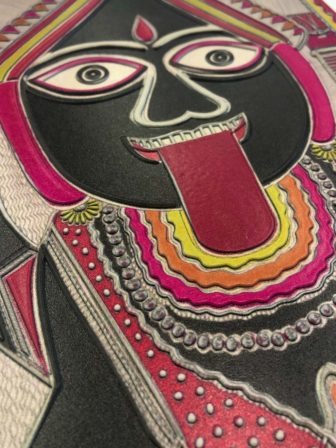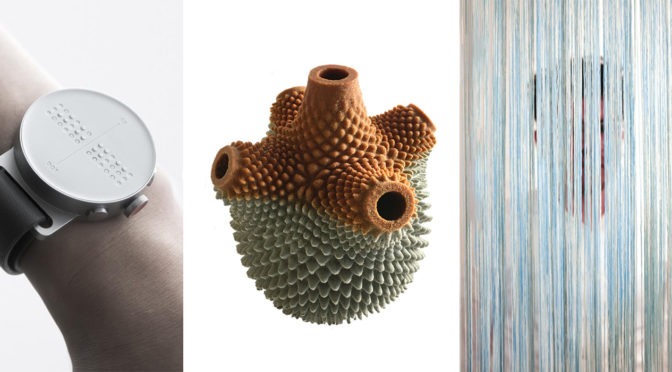| The Palo Alto Art Center premiered their new exhibit, The Art of Disability Culture, on Saturday September 11. Among the beautiful works of art, the splashes of color, rich textures, and intricate sculptures, you’ll find multi-media tactile paintings by blind artist Catherine Chong.
After a retinal detachment and failed surgeries to repair the damage to her retinas in 2018, Catherine took steps towards learning how to adapt to low vision. Those steps led Catherine to LightHouse and we wanted to find out more. How did you first hear about LightHouse? “My elderly aunt and mentor in San Francisco had a blind daughter. Her daughter went to Enchanted Hills Camp every summer and therefore they suggested I call LightHouse. [LightHouse Rehabilitation Counselor] Debbie Bacon gave me a thorough skillful interview to find just the right programs for me. I went to Enchanted Hills Camp where I got an introduction to blindness. Initially, I was so frightened. Robert Alimana gave me my first hope of independence with orientation & mobility skills and Divina Carlson taught me Braille. [Access Technology Trainer] Jeff Buckwalter trained me on the Victor Reader so I could record lectures and read books for my schooling.” After strengthening her independence through the kindness and expertise of LightHouse staff and educators, Catherine had the abilities and confidence to rediscover her lifelong passion—art. “Since kindergarten, I was drawn to work with my hands. When outside recess would start, I would hide among the easels and pots of paint rather than the prejudice of the schoolyards where I could not catch balls. Throughout my life, I have practiced art-making and have acquired many skills like academic western painting, sculpture, photography, traditional Asian painting and calligraphy.” What is your preferred art medium? “Acrylic painting with lots of different mediums such as rough, smooth, bumpy, glass beads and collage for texture. Tactile Paintings! Or sometimes I call them Sensitive Painting. Learning to read Braille was what inspired me to create tactile art.” What are your inspirations? “Humans who have gifted us with wisdom and compassion. My teachers at the LightHouse. Anything is possible. Any beings who have connected humans, animals, or ecology. As a child, my life was filled with beautiful images of saints, stain glass and sacred architecture. As an adult who studied Buddhism, I am touched by Asian stories of the beauty hidden in the ordinary and simplicity.” Is there anything unique or special about your artistic process? “I am not trying to imitate the natural world. Color as symbol and emotion is more important to me. I hope the viewer feels lightened, inspired, and can see themselves in my paintings. The images are the viewer’s reflection of their own true nature. I think the most surprising process for me is using different kinds of light while creating. I have a spot of vision in the outer corner of my left eye, but alas it is only for a few hours a day. Then I have to rest my eyes. So, I have resorted to soft light like candles or lanterns for much of the painting and bright light for short bursts of time when needed. I trace outlines on computers screens or make tactile swell paper images for patterns or stencils. I use string, tape, wiki sticks, even cake decorating tools to make thick tactile lines to help me feel borders. I do put large letters or numbers in the paintings. Sometimes they are upside down to denote mystery or ignorance. Braille meditation teachings in clear plastic are also embedded in most paintings.“ Learn more about Catherine’s art by visiting her website, Lecce-chongartist.com. Follow Catherine on Instagram @Leccechongartist where she posts photos of finished art as well as her process in creating the individual pieces. You can also, of course, attend The Art of Disability Culture show at the Palo Alto Art Center, in personal or virtually, until December 11. |





